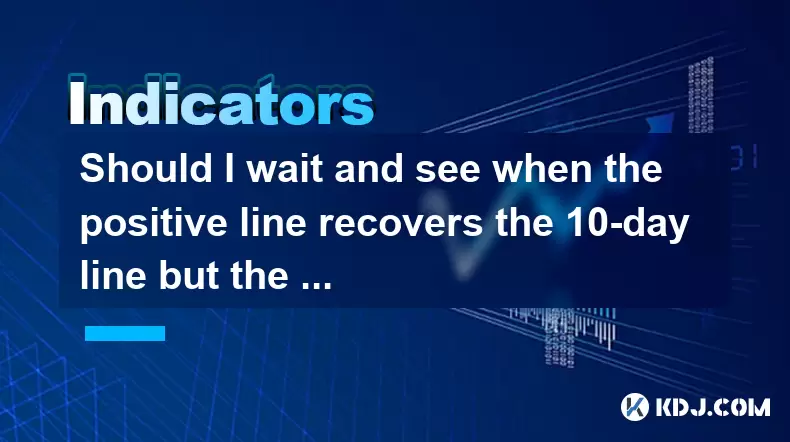-
 Bitcoin
Bitcoin $117700
0.64% -
 Ethereum
Ethereum $3766
1.44% -
 XRP
XRP $3.545
3.02% -
 Tether USDt
Tether USDt $1.000
0.00% -
 Solana
Solana $201.4
12.46% -
 BNB
BNB $766.0
2.28% -
 USDC
USDC $0.9999
0.01% -
 Dogecoin
Dogecoin $0.2720
2.37% -
 Cardano
Cardano $0.8942
5.70% -
 TRON
TRON $0.3135
0.55% -
 Hyperliquid
Hyperliquid $44.62
-2.41% -
 Stellar
Stellar $0.4757
1.39% -
 Sui
Sui $4.010
3.56% -
 Chainlink
Chainlink $19.59
2.25% -
 Hedera
Hedera $0.2701
-0.95% -
 Avalanche
Avalanche $25.68
3.18% -
 Bitcoin Cash
Bitcoin Cash $522.7
-2.05% -
 Shiba Inu
Shiba Inu $0.00001552
2.28% -
 Litecoin
Litecoin $116.1
-0.34% -
 UNUS SED LEO
UNUS SED LEO $8.991
0.01% -
 Toncoin
Toncoin $3.349
3.48% -
 Polkadot
Polkadot $4.504
1.83% -
 Uniswap
Uniswap $10.93
5.54% -
 Ethena USDe
Ethena USDe $1.001
-0.01% -
 Pepe
Pepe $0.00001440
4.56% -
 Monero
Monero $319.3
-0.87% -
 Bitget Token
Bitget Token $4.870
0.09% -
 Dai
Dai $0.9999
0.00% -
 Aave
Aave $321.6
0.20% -
 Bittensor
Bittensor $453.3
10.25%
Should I wait and see when the positive line recovers the 10-day line but the MACD still crosses?
A bullish crypto trade may emerge when the positive line rises above the 10-day moving average alongside a MACD crossover, signaling potential momentum shift.
Jun 29, 2025 at 05:42 pm

Understanding the 10-Day Moving Average and MACD Crossover
In cryptocurrency trading, technical analysis plays a crucial role in identifying potential buy or sell signals. The 10-day moving average is one of the most commonly used indicators among short-term traders due to its responsiveness to price changes. When the positive line, often interpreted as the price itself or an indicator like the signal line in MACD, recovers above this 10-day line, it may suggest a shift in momentum.
MACD (Moving Average Convergence Divergence) is another widely followed tool that helps assess trend direction and strength. The MACD crossover occurs when the MACD line crosses above or below the signal line, signaling bullish or bearish momentum respectively.
When both these conditions occur simultaneously — the positive line recovering above the 10-day line while the MACD remains in a crossover state — it raises questions about whether to act immediately or wait for further confirmation.
- Recovery above the 10-day moving average suggests short-term bullish sentiment.
- MACD crossover confirms momentum but requires additional context to interpret accurately.
How Does the 10-Day Moving Average Influence Short-Term Price Action?
The 10-day moving average acts as a dynamic support or resistance level. In fast-moving crypto markets, especially for assets like Bitcoin or Ethereum, this average can serve as a guide to determine if the current trend is gaining strength or losing ground.
When the price or a key indicator like the MACD signal line moves back above the 10-day line after a pullback, it may indicate that the uptrend is resuming. However, relying solely on this movement without confirming with other indicators could lead to premature entries.
- Daily candlestick closes above the 10-day MA are more reliable than intraday bounces.
- Volume during the recovery should ideally increase to confirm genuine buying interest.
- Historical performance around this level can be backtested to evaluate consistency.
What Does a MACD Crossover Indicate During This Scenario?
A MACD crossover typically indicates a shift in momentum. If the MACD line crosses above the signal line while the price or positive line is recovering toward or above the 10-day moving average, it adds weight to the idea that bulls are regaining control.
However, in volatile crypto environments, false signals are common. A crossover that occurs before the positive line fully recovers the 10-day line might not be as strong compared to one that happens after the price has clearly moved past that average.
- MACD histogram expansion after the crossover supports strengthening momentum.
- Price divergence from MACD may hint at hidden weakness despite the crossover.
- Timeframe alignment between daily and hourly charts can help filter out noise.
Should You Enter Immediately or Wait for Confirmation?
Timing your entry is critical in crypto trading where volatility can trigger rapid reversals. Entering a trade just because the positive line approaches the 10-day line and the MACD shows a crossover might expose you to whipsaws or fakeouts.
Traders often prefer to wait for additional confirmation such as:
- Candlestick patterns like bullish engulfing or hammer formations after the recovery.
- Break of prior resistance levels coinciding with the moving average bounce.
- Confirmation from RSI or volume surges aligning with the moving average and MACD signals.
Waiting allows traders to avoid premature entries and increases the probability of entering at a more favorable level. It also gives time for market sentiment to solidify behind the new direction.
Managing Risk in This Setup
Even with aligned signals like a MACD crossover and a positive line recovering the 10-day line, risk management remains essential. Cryptocurrency markets are known for sudden swings, and even strong setups can fail.
To manage risk effectively:
- Set a stop-loss slightly below the recent swing low or the 10-day moving average itself.
- Use position sizing to limit exposure in case the setup doesn’t play out as expected.
- Monitor for reversal signs such as doji candles or shrinking volume shortly after entry.
Risk-reward ratios should still favor at least a 2:1 outcome to justify entering based on this setup alone.
Frequently Asked Questions
Q: Can I use the 10-day moving average and MACD crossover on any cryptocurrency pair?
Yes, these tools are applicable across various pairs including BTC/USDT, ETH/USDT, and altcoin pairs. However, their effectiveness may vary depending on the liquidity and volatility of the specific asset.
Q: How long should I wait after the positive line recovers the 10-day line before taking action?
It depends on the timeframe being traded. On daily charts, waiting for one or two confirmed candlesticks above the line can provide better clarity. On shorter timeframes like 1-hour or 4-hour, a few hours of consolidation may suffice.
Q: What if the MACD crossover happens below the zero line during this setup?
A crossover below the zero line suggests weaker momentum. While it can still result in a rally, caution is advised. Traders may look for additional bullish confluence before committing capital.
Q: Is there a preferred charting platform for monitoring this setup?
Popular platforms like TradingView, Binance’s native tools, and CoinMarketCap Pro offer built-in MACD and moving average functions. Choose one that offers customization and real-time alerts.
Disclaimer:info@kdj.com
The information provided is not trading advice. kdj.com does not assume any responsibility for any investments made based on the information provided in this article. Cryptocurrencies are highly volatile and it is highly recommended that you invest with caution after thorough research!
If you believe that the content used on this website infringes your copyright, please contact us immediately (info@kdj.com) and we will delete it promptly.
- Cryptos, Meme Coins, Buy Now: Riding the Wave of Hype
- 2025-07-22 08:30:13
- Altcoins in July 2025: Trends, Insights, and a Few Wildcards
- 2025-07-22 08:50:13
- Yuan Stablecoin on Conflux: A New Era for Cryptocurrency?
- 2025-07-22 08:30:13
- Cosmos (ATOM) Network Upgrade Fuels Bullish Momentum, But Overbought Signals Emerge
- 2025-07-22 08:50:13
- Dogecoin, ROI, and the Rising Tide of Meme Coins: What's Next?
- 2025-07-22 08:55:13
- ACRED: Apollo's Tokenized Credit Fund Bridges Wall Street and DeFi
- 2025-07-22 08:55:13
Related knowledge

Advanced RSI strategies for crypto
Jul 13,2025 at 11:01am
Understanding the Basics of RSI in Cryptocurrency TradingThe Relative Strength Index (RSI) is a momentum oscillator used to measure the speed and chan...

Crypto RSI for day trading
Jul 12,2025 at 11:14am
Understanding RSI in the Context of Cryptocurrency TradingThe Relative Strength Index (RSI) is a momentum oscillator used to measure the speed and cha...

Crypto RSI for scalping
Jul 12,2025 at 11:00pm
Understanding RSI in the Context of Crypto TradingThe Relative Strength Index (RSI) is a momentum oscillator widely used by traders to measure the spe...

What does an RSI of 30 mean in crypto
Jul 15,2025 at 07:07pm
Understanding RSI in Cryptocurrency TradingRelative Strength Index (RSI) is a momentum oscillator widely used in cryptocurrency trading to measure the...

What does an RSI of 70 mean in crypto
Jul 13,2025 at 06:07pm
Understanding the RSI Indicator in Cryptocurrency TradingThe Relative Strength Index (RSI) is a widely used technical analysis tool that helps traders...

Does RSI work in a bear market for crypto
Jul 16,2025 at 01:36pm
Understanding RSI in Cryptocurrency TradingThe Relative Strength Index (RSI) is a momentum oscillator used by traders to measure the speed and change ...

Advanced RSI strategies for crypto
Jul 13,2025 at 11:01am
Understanding the Basics of RSI in Cryptocurrency TradingThe Relative Strength Index (RSI) is a momentum oscillator used to measure the speed and chan...

Crypto RSI for day trading
Jul 12,2025 at 11:14am
Understanding RSI in the Context of Cryptocurrency TradingThe Relative Strength Index (RSI) is a momentum oscillator used to measure the speed and cha...

Crypto RSI for scalping
Jul 12,2025 at 11:00pm
Understanding RSI in the Context of Crypto TradingThe Relative Strength Index (RSI) is a momentum oscillator widely used by traders to measure the spe...

What does an RSI of 30 mean in crypto
Jul 15,2025 at 07:07pm
Understanding RSI in Cryptocurrency TradingRelative Strength Index (RSI) is a momentum oscillator widely used in cryptocurrency trading to measure the...

What does an RSI of 70 mean in crypto
Jul 13,2025 at 06:07pm
Understanding the RSI Indicator in Cryptocurrency TradingThe Relative Strength Index (RSI) is a widely used technical analysis tool that helps traders...

Does RSI work in a bear market for crypto
Jul 16,2025 at 01:36pm
Understanding RSI in Cryptocurrency TradingThe Relative Strength Index (RSI) is a momentum oscillator used by traders to measure the speed and change ...
See all articles

























































































